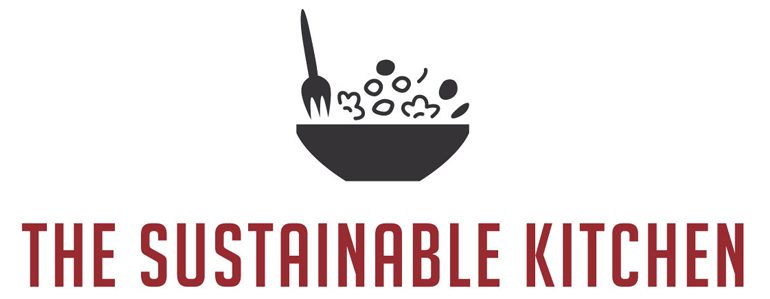Few things capture the essence of summer quite like a refreshing dessert. If I close my eyes and imagine myself somewhere tropical, I would be swinging on a hammock on the beach, eating Mango Sago. Mango sago is an Asian-inspired chilled treat made with fresh, ripe mangoes bursting with flavors, coconut milk, and tapioca pearls adding a delightful of chewiness.
I love Mango Sago as it’s a no-bake dessert that is fast and easy to prepare. It also makes a great dish to bring to summer cookouts, pool parties, and get-togethers. This dessert is versatile as you can replace the mangoes with other fruits, such as strawberries or coconut. It’s not too sweet but is the perfect combination of creaminess and sweetness. It is the perfect bite of the tropics with every spoonful!
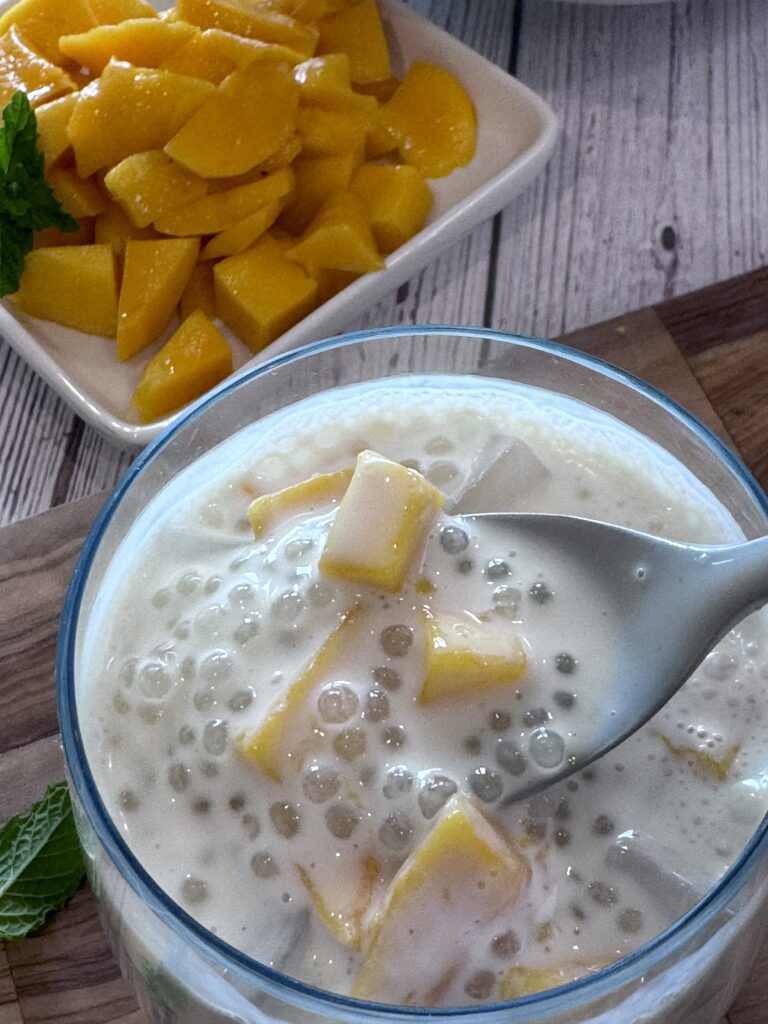
As a kid growing up in an Asian household, I rarely recalled sugar-laden desserts served after meals. Our typical dessert would be fresh fruits like oranges, apples, or pears that my mom cut up. On occasions when we do get pastries from the bakery, it would be dishes like steamed bananas served with a coconut sauce, or soft, pillowy cakes with fresh fruits on top, in other words, nothing too sweet. Looking at most typical Asian desserts, you will notice it’s not too sweet.
Instead of intensely saccharine frosted cupcakes and iced cookies, you will see many Asian desserts are light and spongy. I remember bringing a piece of cake to my friend’s house, and her jokingly saying she could use it to clean her kitchen as it was so spongy. It was not the dense, frosted cakes she was used to.
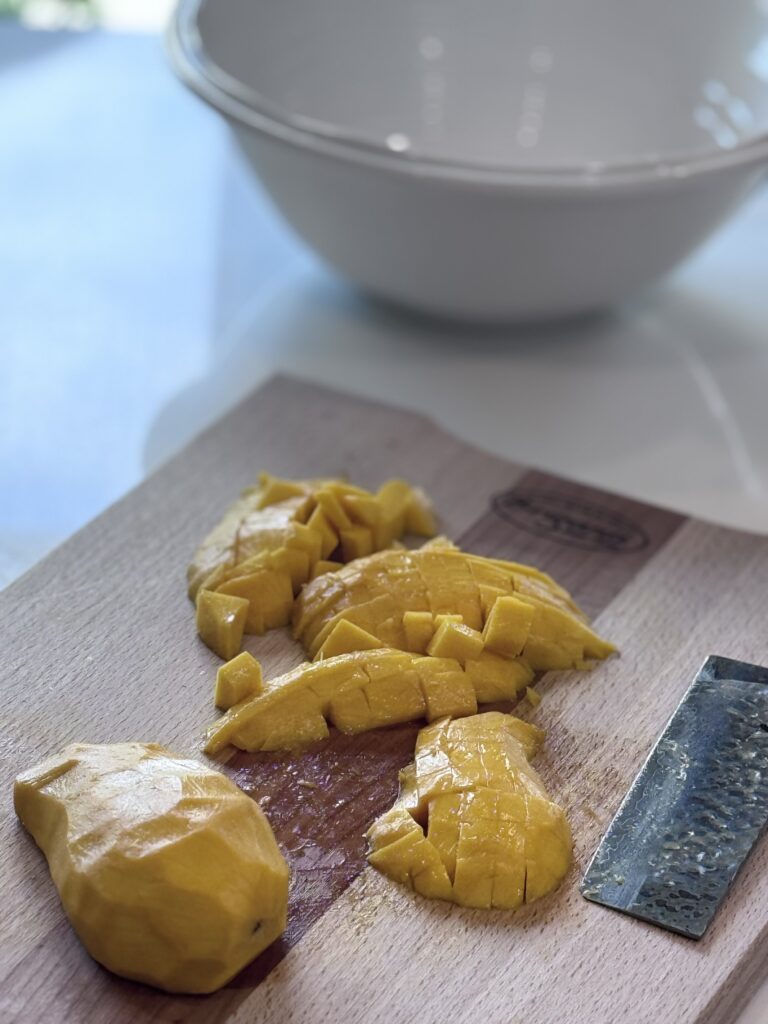
Not Too Sweet
One big reason why most Asian desserts are not sweet like Western desserts is that, in Asia, sugar was first refined in subtropical India, but the country did not start trading sugar until the late 1960s. Before that, most Asian dishes were sweetened with honey or fruits. Asian baking is also about balancing and harmonizing flavors.
WHERE DID MANGO SAGO COME FROM
Mango Sago is believed to have been invented by Lei Garden in 1984 in Singapore. The head chef, Wong Wing-Chee was said to be inspired by the local ingredients in Singapore and decided to make a dessert featuring mango, pomelo, and sago. However, there is another version where Lei Garden invented the dish to make use of leftover pomelo.
Today, this dish has evolved into many different variations, becoming a global sensation. You can now find it in many boba tea shops or dessert parlors. Although there are many variations of it, the component remains the same—a creamy, not-too-sweet pudding made with coconut milk and tapioca balls, or sago.

SAGO VS. TAPIOCA PEARLS
While sago and tapioca pearls appear to be identical, they are quite different. Tapioca is made from cassava, a root vegetable. Sago is made from the pith of the sago palm. Tapioca balls are the chewy balls you find in most boba teas. Sago is used in sweet and savory dishes, including pudding.
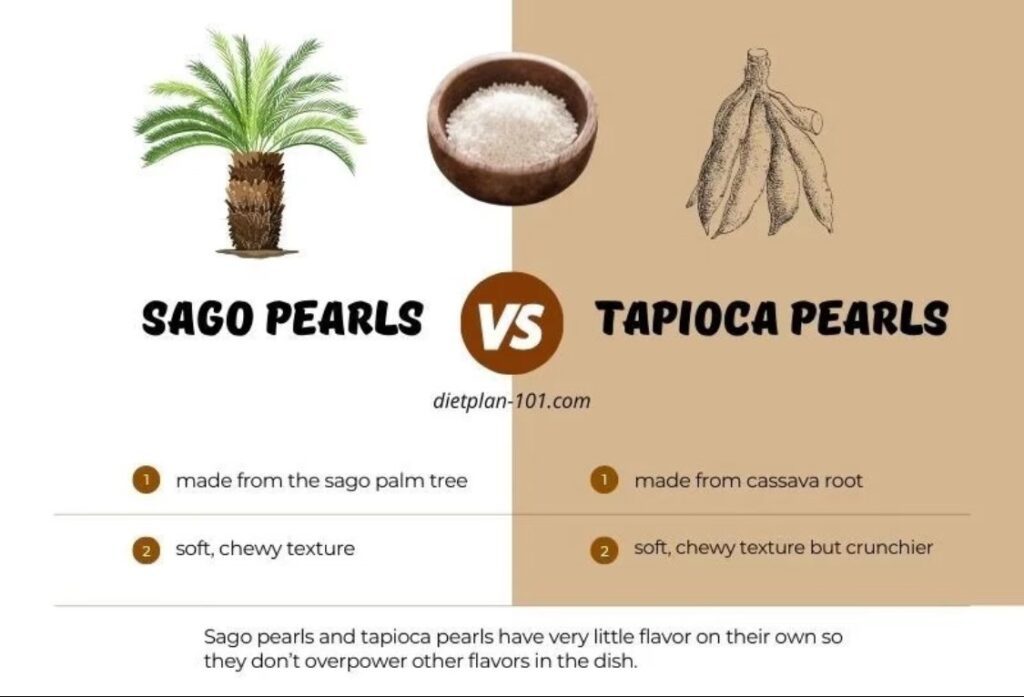
Sago pearls are often white, while tapioca pearls can be found in a multitude of colors. In most cases, the colors are used for visual presentation and do not correlate to tastes. Both pearls are neutral-tasting because of the starch, and do not have a “flavor.” Sago is not commonly found in the US, while tapioca pearls are sold in dried form and require cooking.
THE RECIPE
Be prepared to be transported to a tropical island with this Mango Sago recipe. Making this at home is quick and easy—no passport needed!
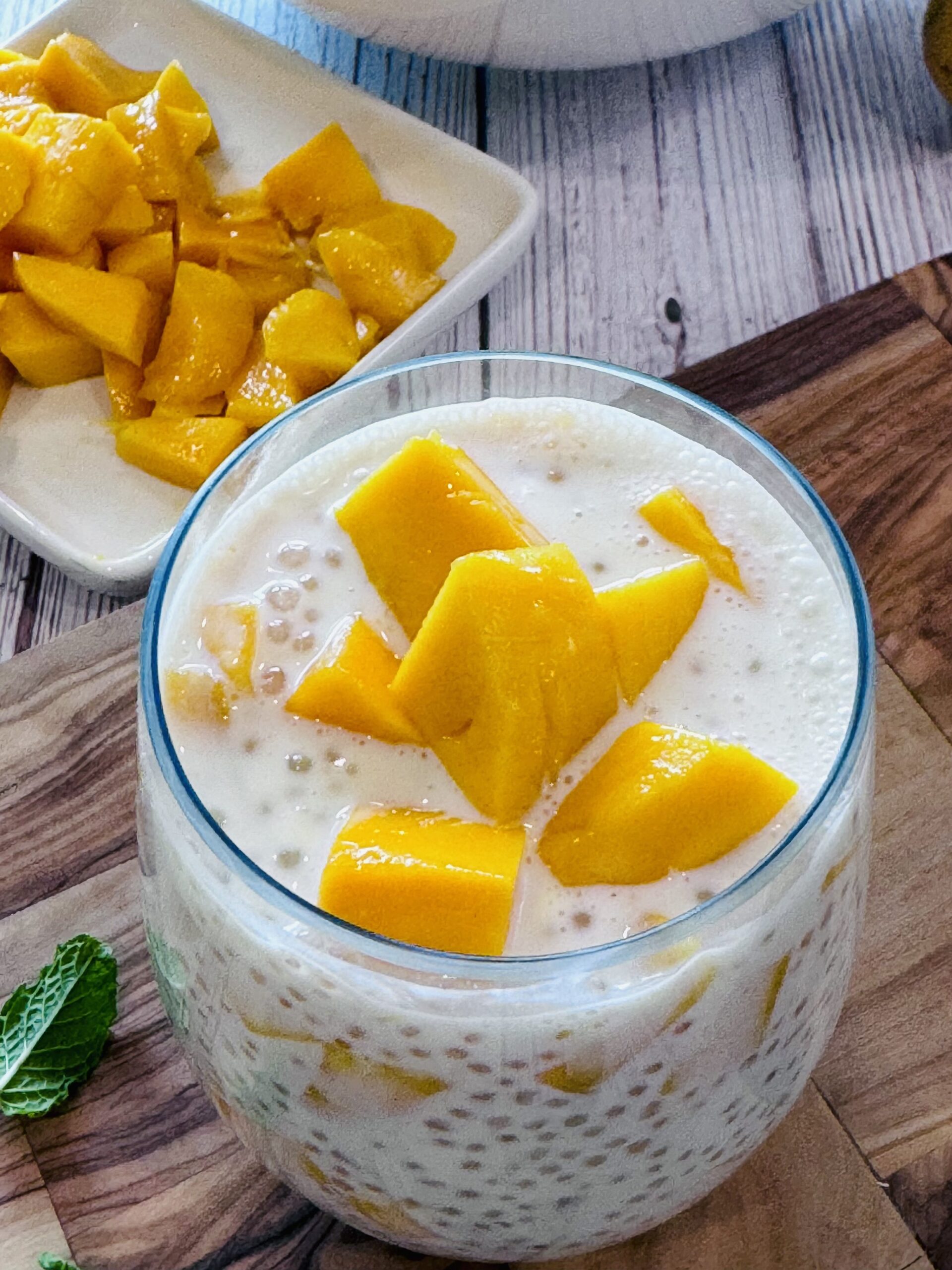
WHAT YOU WILL NEED:
- 1 cup of tapioca pearls or sago
- 3 ripe mangoes, peeled and cubed
- 1 jar of drained Nata de Coco (coconut jelly)
- 1 can of coconut milk
- 2/3 cup condensed milk (more if needed)
- 1 can of evaporated milk
Equipment Needed
Step 1: Add 4 cups of water to a pot and bring to a boil. Add in tapioca pearls. Bring it to a boil again, then reduce heat to medium-low for 10 minutes, stirring occasionally to prevent sticking. Take off heat, cover with a lid and let sit for another 10 minutes.
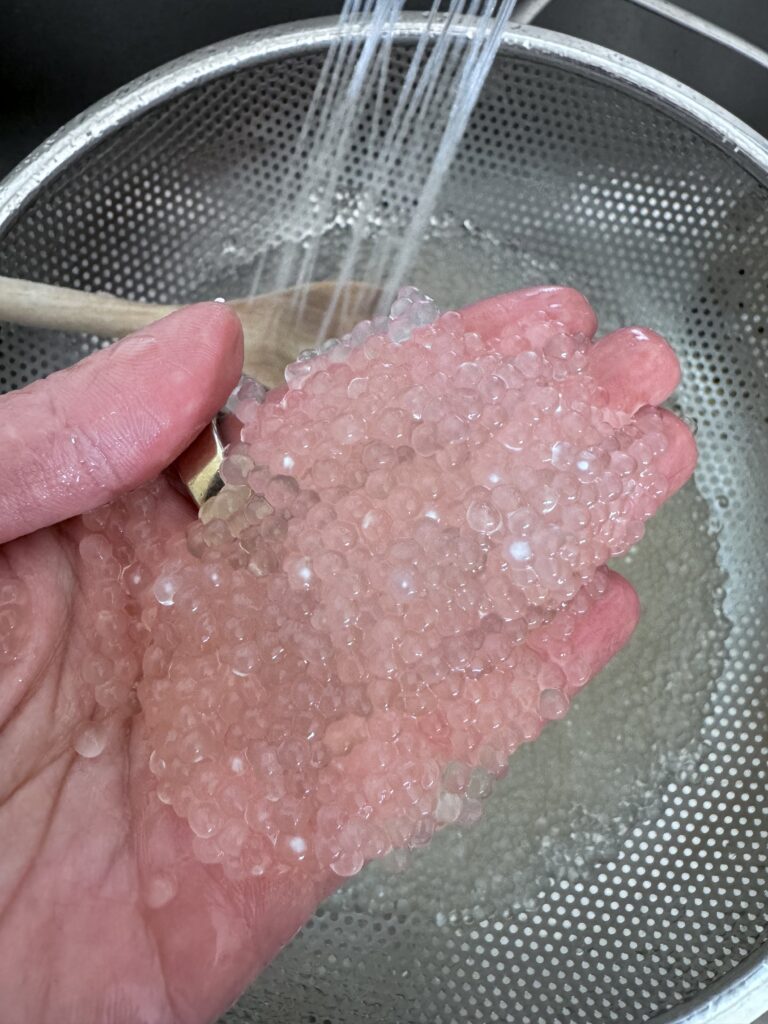
Step 2: Drain the tapioca pearls and rinse under cold running water. Set aside.
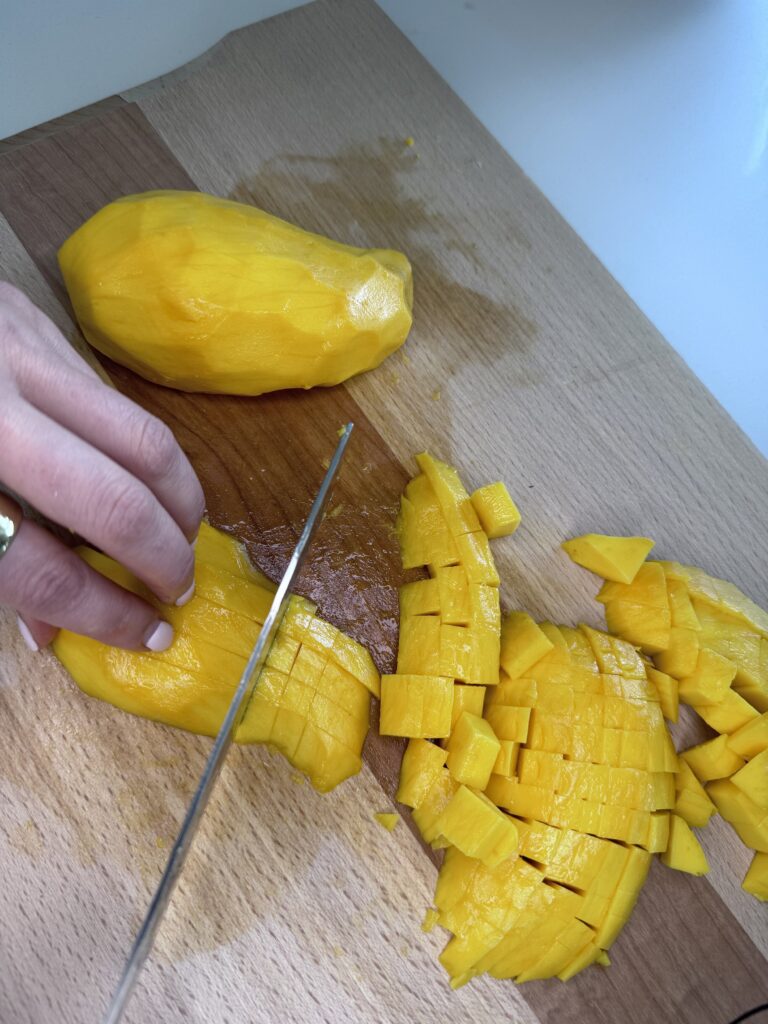
Step 3: In a large bowl, add cubed mangoes, nata de coco, coconut milk, evaporated milk, and condensed milk. Add in the tapioca pearls and stir to combine. Add more condensed milk if more sweetness is desired. Refrigerate for up to 4 hours. Served chilled.
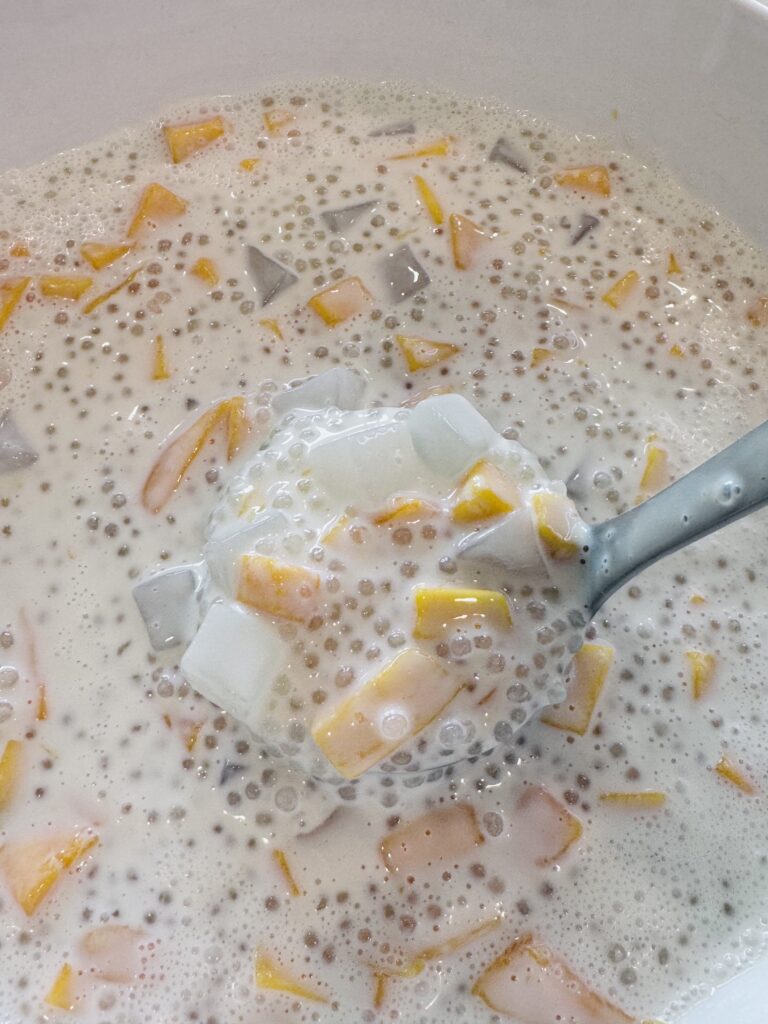
✅ Quick Tips: Read the recipe in its entirety before you start cooking. This will help you understand the ingredients, steps, and timing involved, and allow you to prepare any necessary equipment or ingredients beforehand.
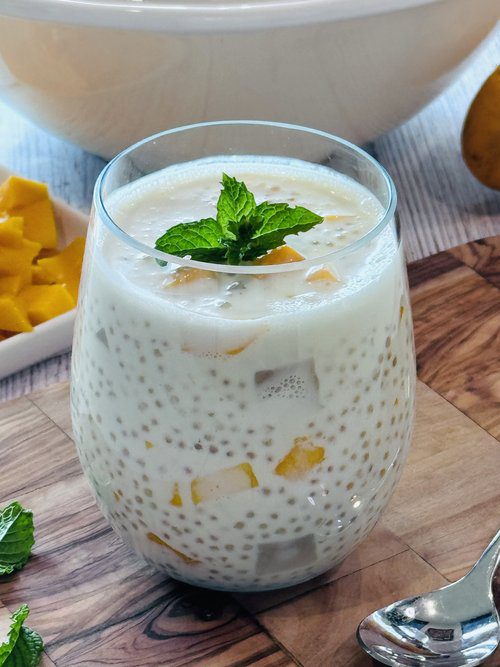
Mango Sago
Ingredients
Nutritional Value
Nutritional Value
- Amount Per Serving
- Calories 638kcal
- % Daily Value *
- Total Fat 13g20%
- Saturated Fat 8g40%
- Cholesterol 47mg16%
- Sodium 178mg8%
- Potassium 861mg25%
- Total Carbohydrate 121g41%
- Dietary Fiber 4g16%
- Sugars 75g
- Protein 13g26%
- Calcium 445 mg
- Iron 1 mg
* Percent Daily Values are based on a 2,000 calorie diet. Your daily value may be higher or lower depending on your calorie needs.
